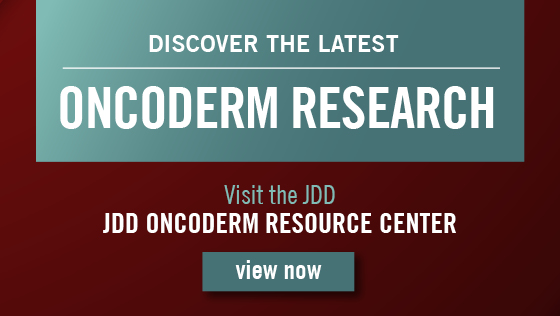Stay up-to-date on new clinical findings in Oncoderm.
Oncoderm Articles

Oncoderm Articles
Non-Invasive Diagnosis of Sun Damaged Skin: Actinic Keratosis Vs Squamous Cell Carcinoma
Importance: Actinic keratosis (AK) is a premalignant lesion that has a1% to 10% potential of progression to squamous cell carcinoma (SCC), but it is not possible to determine which lesions are at higher risk.
Anti-Tumor Necrosis Factor Alpha Therapeutic Drug Monitoring in Inflammatory Disease: A Systematic Review
Background: Monoclonal antibodies encompass an increasingly important treatment for a variety of dermatologic conditions including hidradenitis suppurativa (HS). The high failure rate and cost of anti-tumor necrosis alpha (TNF-α) agents and emergence of biologic treatments critically warrant treatment strategies that identify treatment failures early and optimize therapy. This review’s primary objective is to understand the current literature on biologic therapeutic drug monitoring (TDM) used in chronic inflammatory diseases and apply this knowledge to future dermatologic studies and treatment.
Non-Invasive Treatment of Basal Cell Carcinoma: Photodynamic Therapy Following Curettage
Background: To investigate the effectiveness, safety, patient satisfaction, and cosmetic outcome of Methyl Aminolevulinate-Photodynamic Therapy (MAL-PDT) following curettage in order to make recommendations for its use in dermatology practices.
Diversifying the Mohs Workforce: Understanding Barriers of Applicants to Mohs Micrographic Surgery Fellowship
Background: The population of the United States is becoming increasingly diverse, yet dermatology, especially Mohs micrographic surgery (MMS), lags behind.
Utility of Gene Expression Profiling in Skin Cancer: A Comprehensive Review
Understanding the metastatic potential of a skin cancer is essential to effective management. Gene expression profiling (GEP) is an innovative technology that has allowed for a better understanding of tumor biology in various skin cancers. Current methods focus on identifying and quantifying ribonucleic acid (RNA) transcripts in tissue samples. Using reverse transcriptase-polymerase chain reaction, specific RNA transcripts are reverted into deoxyribonucleic acid (DNA) for quantification.
Advertisement
Podcasts
Saving Skin, Hair & Nails with Supportive Oncodermatology: A Call to Action for All Those Involved
Supplements
US Cutaneous Oncodermatology Management (USCOM): A Practical Algorithm
An increasing number of patients survive or are living with cancer. Anticancer treatments frequently have cutaneous adverse events (cAEs) that may severely impact patients’ quality of life and interrupt anticancer treatment. The US Cutaneous Oncodermatology Management (USCOM) project aims to improve cancer patients’ and survivors’ quality of life by offering tools for preventing and managing cAEs.






